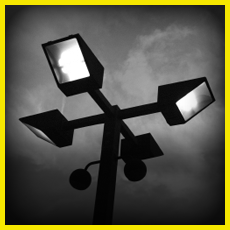OVERVIEW
Unlike American homes, commercial spaces—grocery stores, offices, factories, hospitals and parking lots—often leave their lights on day and night. Even though these settings account for only 2% of the light bulbs in the U.S., they account for 17% of lighting energy use.1 These kinds of spaces consumed 525,000 GWh of electricity on lighting alone in 2010.2 Recent technological advances could save the U.S. tens or hundreds of thousands of GWh annually from this sector alone.3
ANALYSIS
Commercial lighting uses more efficient technologies than its residential counterpart. But because these bulbs are used for so many hours each day,4 there are still opportunities for improvements to further reduce energy costs and energy usage. Among the most promising of these are solid-state lighting, lighting controls, and daylighting.
With solid-state lighting, generally light emitting diodes (LEDs), energy can be saved without sacrificing either quantity or quality of light. Potentially two times more efficient than fluorescent lighting, and 50% more efficient than many streetlights,5 LEDs are still developing and unfortunately too expensive for many businesses.6
Lighting controls automatically adjust to actual use and conditions, saving up to 38% of the lighting energy usage for a facility,7 often with relatively low upfront investment.8 With only 31% of commercial facilities using controls,9 the energy savings potential from retrofits is significant,10 but the payback period often discourages investment.11
While not an option for existing buildings, new construction can use daylighting—extensive use of skylights, windows, light pipes,12 and other building features that bring sunlight inside—to replace a significant amount of lighting needs. Use of daylighting can reduce total building energy consumption by up to 20%,13 and it also has proven effects on productivity and morale.14 Unfortunately, building codes do little to encourage the practice, instead leading to the cheapest construction costs rather than the most efficient operation.15
IMPLEMENTATION
To encourage technology development, investment, and better building practices, several policies should be implemented.






